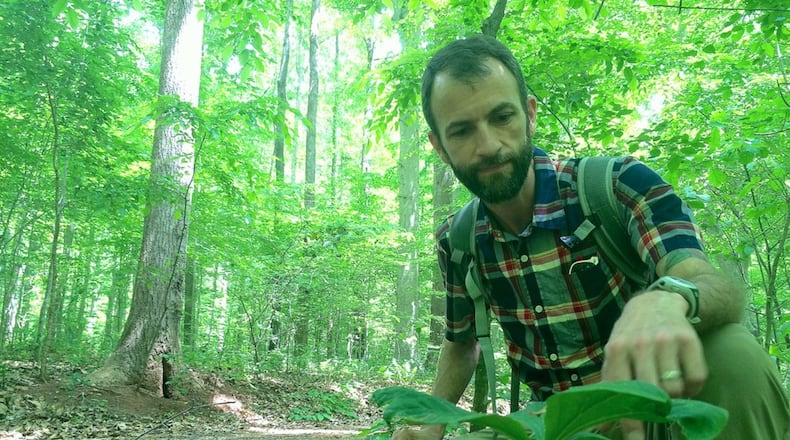Until last week, I had not visited Fernbank Forest in Atlanta’s Druid Hills neighborhood in nearly three years. Back then, the 65-acre, old-growth forest that I dearly love — I got hooked on bird watching there — was in poor condition.
Nearly 50 species of invasive, non-native plants were choking out ferns, wildflowers and shrubs native to Piedmont hardwood forests. English ivy covered much of the forest floor, preventing the native plants from sprouting. Wisteria vines climbed into the towering tree canopy and threatened hardwoods — some of them champion trees — up to 300 years old. Chinese privet grew in nearly impenetrable thickets.
But, when I visited the other day, the forest seemed on the road to recovery. Most of the ivy was gone. Instead, a layer of fallen tree leaves and twigs — important for a healthy forest — was covering the forest floor. Christmas ferns, rattlesnake ferns, trilliums, wild ginger and other natives poked up through the “leaf litter.”
Sunlight, no longer blocked by climbing wisteria and ivy, filtered through the tree canopy and dappled the forest floor. Magnificent oaks, hickories and other trees seemed grander than ever as they basked in the midday light. (The forest harbors 64 native tree species.)
With privet thickets removed, I could see hundreds of feet through the forest — another sign of good forest health.
I was with ecologist Eli Dickerson and colleagues at Fernbank Museum of Natural History, which owns and manages the forest, one of the largest old-growth Piedmont forests in a major U.S. metropolitan area. Fernbank, Dickerson noted, intends to return the forest to ecological health.
That means ridding it of invasives. A lot of work is still ahead for Fernbank to reach that goal. But, after more than a year of restoration, the forest, in my eyes, has undergone a remarkable transformation — a lesson in forest rehab.
During the restoration, the forest has been closed to the public, but Fernbank expects to reopen it within the next few weeks.
In the sky: From David Dundee, Tellus Science Museum astronomer: Autumn officially begins at 10:21 a.m. Thursday. The moon will be last-quarter Friday. Venus is low in the west and Mars and Saturn are in the southwest around nightfall.
About the Author
Keep Reading
The Latest
Featured


